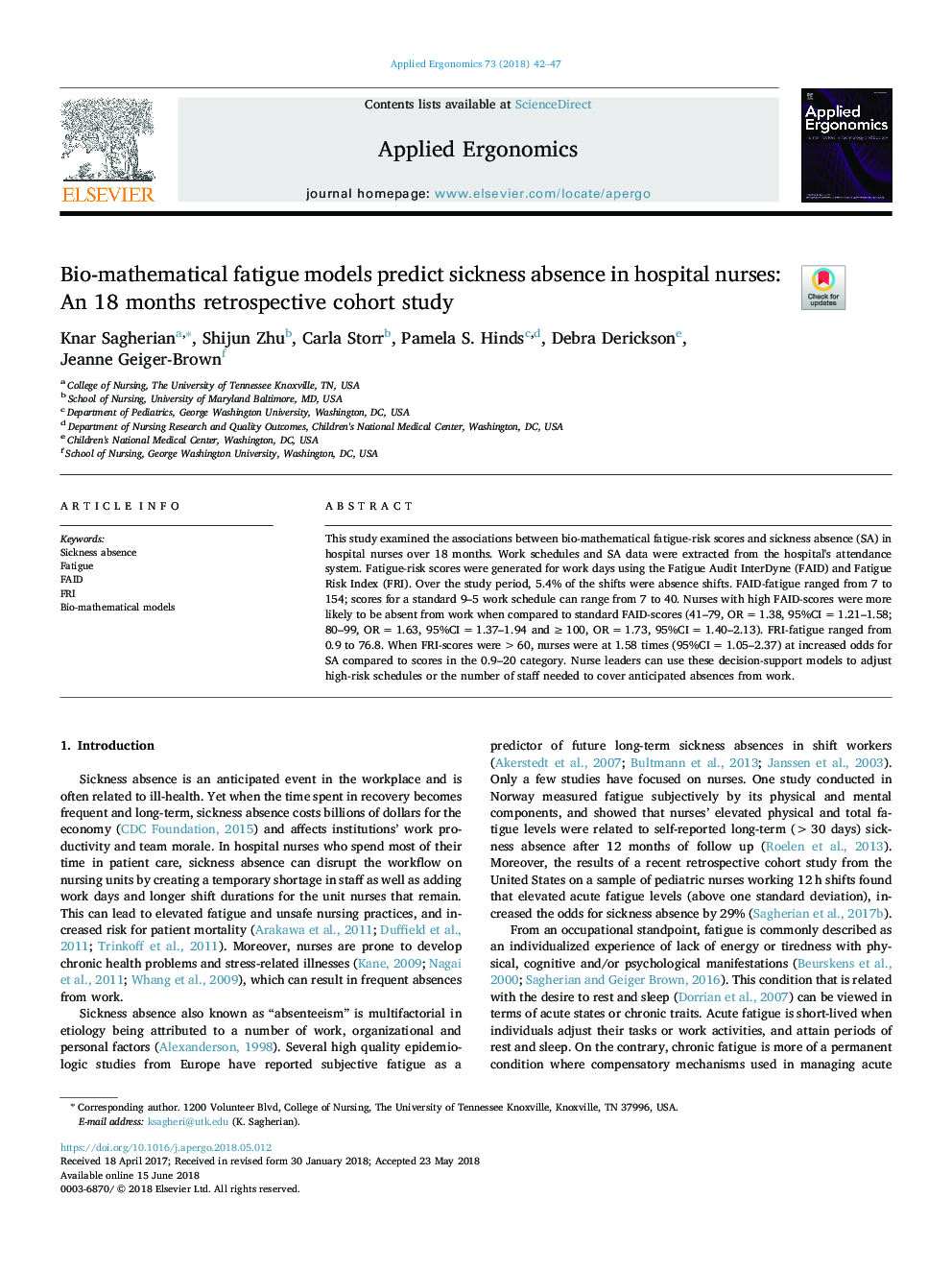| Article ID | Journal | Published Year | Pages | File Type |
|---|---|---|---|---|
| 6947541 | Applied Ergonomics | 2018 | 6 Pages |
Abstract
This study examined the associations between bio-mathematical fatigue-risk scores and sickness absence (SA) in hospital nurses over 18 months. Work schedules and SA data were extracted from the hospital's attendance system. Fatigue-risk scores were generated for work days using the Fatigue Audit InterDyne (FAID) and Fatigue Risk Index (FRI). Over the study period, 5.4% of the shifts were absence shifts. FAID-fatigue ranged from 7 to 154; scores for a standard 9-5 work schedule can range from 7 to 40. Nurses with high FAID-scores were more likely to be absent from work when compared to standard FAID-scores (41-79, ORâ¯=â¯1.38, 95%CIâ¯=â¯1.21-1.58; 80-99, ORâ¯=â¯1.63, 95%CIâ¯=â¯1.37-1.94 andâ¯â¥â¯100, ORâ¯=â¯1.73, 95%CIâ¯=â¯1.40-2.13). FRI-fatigue ranged from 0.9 to 76.8. When FRI-scores were >60, nurses were at 1.58 times (95%CIâ¯=â¯1.05-2.37) at increased odds for SA compared to scores in the 0.9-20 category. Nurse leaders can use these decision-support models to adjust high-risk schedules or the number of staff needed to cover anticipated absences from work.
Keywords
Related Topics
Physical Sciences and Engineering
Computer Science
Human-Computer Interaction
Authors
Knar Sagherian, Shijun Zhu, Carla Storr, Pamela S. Hinds, Debra Derickson, Jeanne Geiger-Brown,
